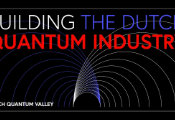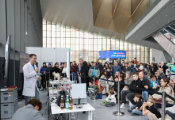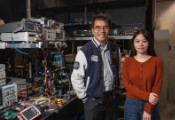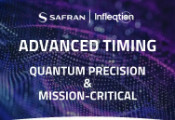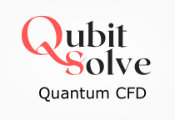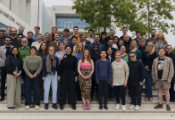Hammes-Schiffer Publishes First-Principles Methods Simulating Real-Time Dynamics of Molecular Polaritons
Princeton University, September 11, 2025 -- This is what fun looks like for a particular set of theoretical chemists driven to solve extremely difficult problems: deciding if the electromagnetic fields in molecular polaritons should be treated classically or quantum mechanically.
Graduate student Millan Welman of the Hammes-Schiffer Group is first author on a new paper that presents a hierarchy of first-principles simulations of the dynamics of molecular polaritons.
Originally 67 pages long, the paper is dense with von Neumann equations and power spectra. It explores dynamics on both electronic and vibrational energy scales. It makes use of time-dependent Density Functional Theory (DFT) in both its conventional and Nuclear-Electronic Orbital (NEO) forms. It spans semiclassical, mean-field-quantum, and full-quantum approaches to simulate polariton dynamics.
And Welman had “fun” putting it together.
“There is data that exists from the experimental world which suggests that you can modify the rates of chemical reactions by performing them in an optical cavity under strong interactions with an electromagnetic field,” said Welman. “It’s a wonderful, fun problem. I loved it. Because if those experiments are actually onto something, that would be pretty transformative.”
Polaritons are roughly defined as quasiparticles generated by strong light-matter interactions. They are complicated systems we don’t fully comprehend, but they could help advance our understanding of how to control molecular behavior using light.
The paper provides a conceptual framework through which experimentalists might look for unique behaviors by treating the light (i.e. the electromagnetic wave) quantum mechanically that are not apparent by treating it classically. The signature of that difference, so to speak, is any evidence of quantum entanglement between the photons and the molecules.
Researchers wanted to determine whether evidence for such a difference could be detected through approaches that computationally simulate the dynamical behavior of molecular polaritons. They found that this is indeed the case.
Together with A. Barton Hepburn Professor of Chemistry Sharon Hammes-Schiffer and former group postdoc Tao Li, Welman published “Light-Matter Entanglement in Real-Time Nuclear-Electronic Orbital Polariton Dynamics” last month in the Journal of Chemical Theory and Computation. The paper presents first-principles methods to simulate the real-time dynamics of molecular polaritons in the strong coupling regime.
In order to drill down into the complicated system of polaritons from a foundational perspective, researchers focused their work on one molecule interacting with an electromagnetic wave confined in an optical cavity.
“We keep it simple,” said Welman. “But there is no reduction in the complexity of the problem beyond what’s absolutely required to make it tractable on your computer.”
It is the kind of foundational research that may not have immediate application. But as a practical problem in the rapidly evolving world of quantum science, it is essential to understand molecular dynamics and the ways in which human beings might be able to control them for future technologies.
Digging deeper to see entanglement
The Hammes-Schiffer Group works on the simulation of quantum chemical problems, especially those that involve nuclear quantum effects.
The investigation on this research started several years ago when Li was still a postdoc with the lab. Working from this point with a simulated cavity, Welman treated the electromagnetic field using both classical equations of motion and quantum mechanics, asking if there would be a difference in outcomes. There is.
On the surface, the dynamics of the simulated polaritons—the spectra, Rabi splitting, where the peaks go when you look at how the system is moving—were all the same and could be described classically. But digging deeper, Welman discovered that the simulated polaritons also revealed novel behavior due to quantum entanglement.
“This is something exciting that popped up. No one else has done the full quantum with quantum electrons and quantum nuclei and a quantum cavity mode in a dynamical way. That’s what makes this research different,” said Hammes-Schiffer.
“So then the question is, how important is this and how can we control it? And also, how can we guide the experimentalists to be able to see this in their experiments? Those are the bigger questions we were asking.
“Whether they can measure it experimentally, we don’t know yet. In a sense, we can tell an experimentalist that they can increase the coupling and then they’ll see the entanglement. It’s a different kind of behavior,” she added. “But still, we have a ways to go before we really understand all of this.”
By quantifying the role of the light-matter entanglement, the lab has produced a sense of what kind of description is necessary for the treatment of light when scientists are simulating polaritons. Their methodology pushes forward an approach to studying polaritons that is not only time dependent, but is in contrast to the more conventional, simplified model systems.
“I had the opportunity in this paper to take a deep dive into a very novel application, using Density Functional Theory—which I think is a beautiful theory—and applying it to the beautiful problem of understanding a small portion on the tail of the larger spectrum of how light and electromagnetic fields interact with molecules,” said Welman. “Has that experience always been easy? Absolutely not. But it has been deeply rewarding.”
Because this paper looked at an electromagnetic field interacting with only one molecule, researchers are hoping next to build towards more and more molecules to reflect investigations that experimental physical chemists might carry out.
“Sometimes you do the first principles dynamics and see what you get,” said Hammes-Schiffer. “Now that we’ve done this, there are a lot of directions Millan could take the research in. It really opens up a lot of questions. This particular paper is one step in the journey forward. And now we’re going to build on it.”
This research was supported by funding from the Air Force Office of Scientific Research.

